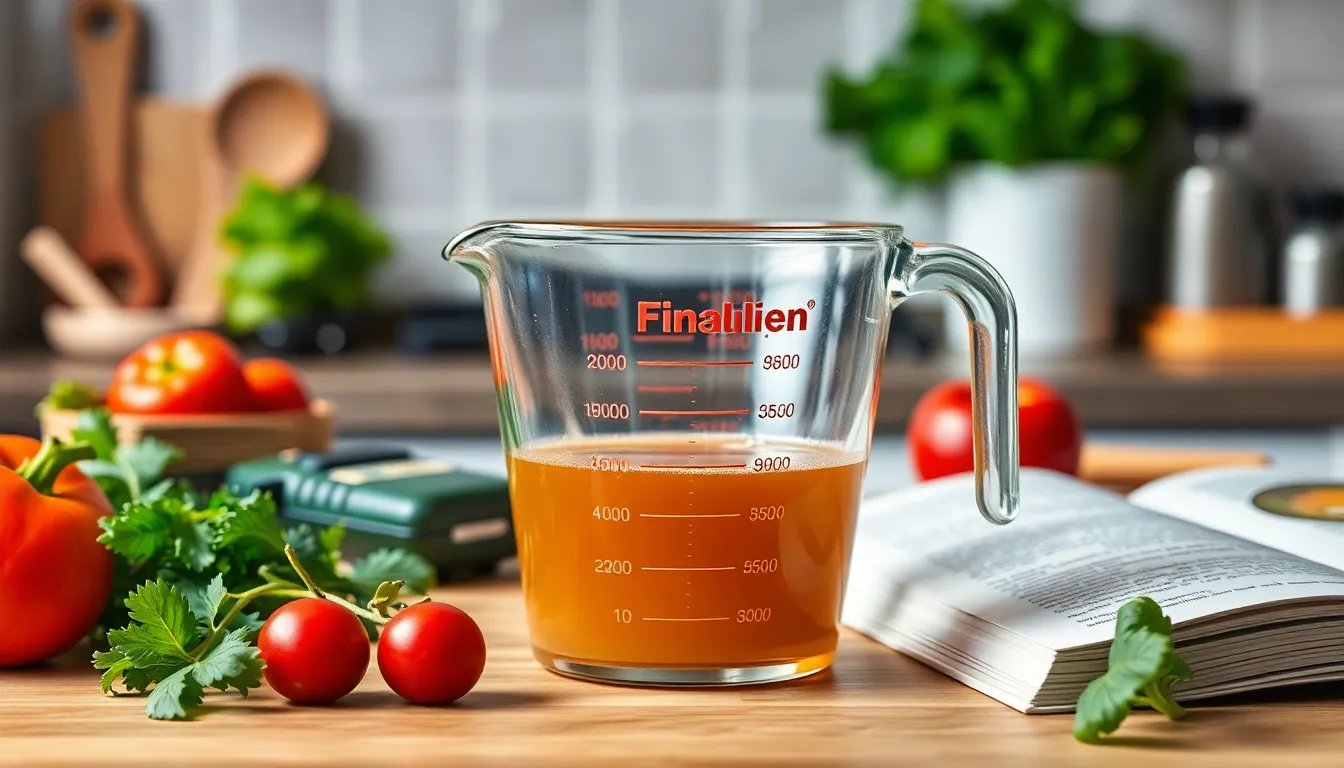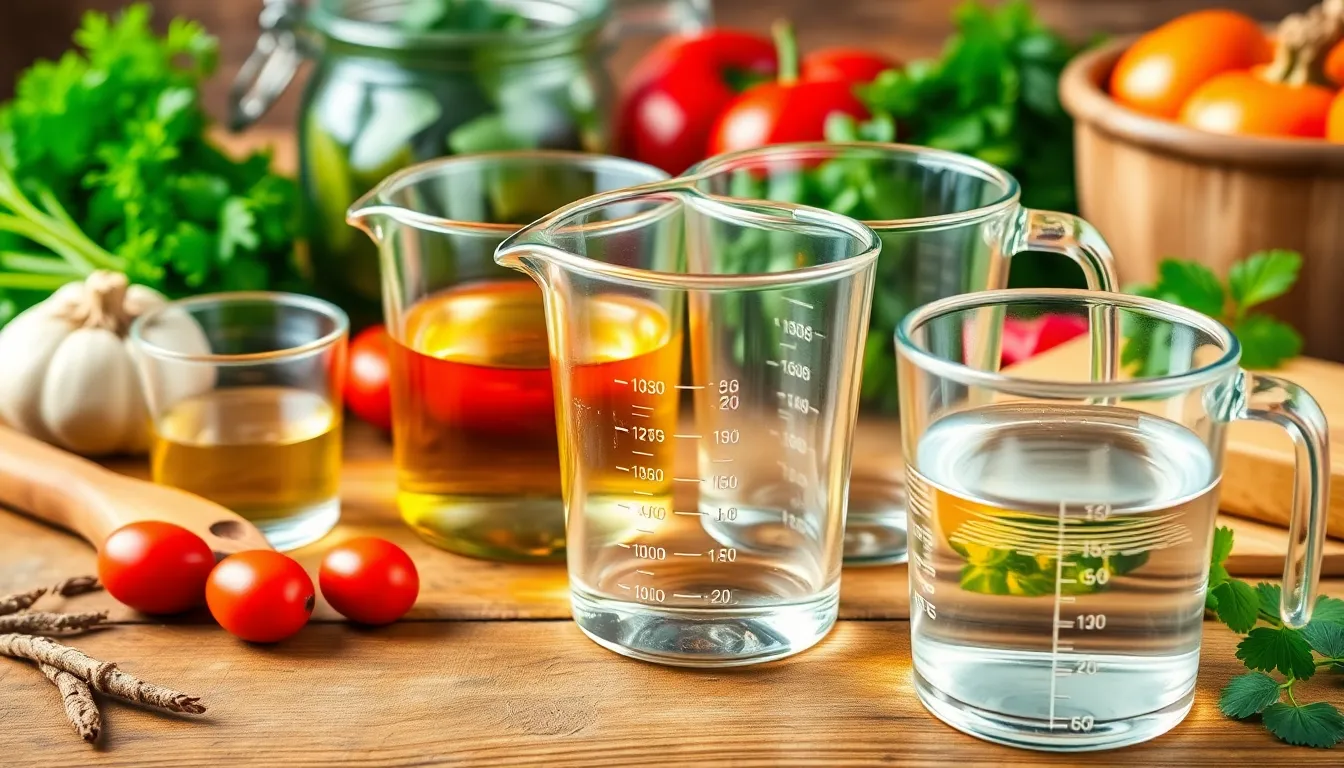When it comes to cooking and baking, precise measurements can make all the difference. Many people often find themselves wondering how many ounces are in 2 cups, especially when dealing with recipes that require specific quantities. Understanding these conversions not only simplifies the cooking process but also ensures that dishes turn out just right.
In the world of measurements, cups and ounces are commonly used units, and knowing their relationship is essential for anyone in the kitchen. Whether you’re a seasoned chef or a novice cook, mastering these conversions can enhance your culinary skills and boost your confidence in preparing meals. Let’s dive into the details of this common conversion and uncover the answer you need.
Table of Contents
ToggleUnderstanding Cups and Ounces
Cups and ounces represent common units of volume in cooking and baking. Grasping their definitions aids in accurate measurements essential for successful recipes.
Definition of Cups
Cups serve as a standard measurement in cooking, primarily for liquids and dry ingredients. One cup equals 8 fluid ounces in the US measurement system. Measuring cups typically come in various sizes, with common measurements including 1/4 cup, 1/3 cup, 1/2 cup, and 1 cup. Recipes often specify measurements in cups, making it vital to understand this unit for consistency in results.
Definition of Ounces
Ounces, specifically fluid ounces, quantify volume in both the US and UK measurement systems. In the US, one fluid ounce equals approximately 29.57 milliliters. Ounces are crucial for precise liquid measurements, especially in recipes requiring accuracy. Understanding fluid ounces enables cooks to convert measurements easily between cups and ounces, enhancing overall cooking effectiveness.
The Conversion: 2 Cups Equals How Many Ounces


Understanding the conversion between cups and ounces clarifies measurements in cooking and baking. Specifically, 2 cups equals 16 fluid ounces in the US measurement system.
Standard Measurement Conversion
Measurement conversions between cups and ounces rely on a consistent standard. One cup equals 8 fluid ounces. Therefore, to determine the number of ounces in multiple cups, multiply the number of cups by 8. For example:
- 1 cup = 8 ounces
- 2 cups = 16 ounces
- 3 cups = 24 ounces
This straightforward method ensures accuracy in various recipes and aids in portion control.
Practical Examples of Conversion
Practical examples illustrate the application of this conversion in everyday cooking. Here are several scenarios:
- Recipe Adjustments: A recipe calls for 2 cups of broth. Converting this amount results in 16 ounces, providing clarity when measuring liquids.
- Portion Sizes: A serving size of 2 cups of salad translates to 16 ounces, helping individuals track their intake or meal prep.
- Ingredient Substitutions: If a dish requires 2 cups of milk, knowing it’s 16 ounces assists in determining alternatives like cream or dairy-free options.
These examples emphasize the importance of accurate measurements and enhance culinary practices.
Common Uses for Cup to Ounce Conversion
Understanding cup to ounce conversions plays an essential role in the culinary world. Accurate measurements contribute to consistent results in cooking and baking, making conversions critical in various applications.
Cooking and Baking Applications
Recipes often call for specific measurements in cups or ounces. In baking, precise ingredient ratios can dictate the success of cakes, cookies, and breads. For example, a recipe may require 2 cups of flour, equivalent to 16 ounces, ensuring the right texture and structure. Similarly, cooking sauces and soups generally demand exact liquid measurements. By converting cups to ounces, chefs guarantee they use the correct amount of ingredients, leading to balanced flavors and appealing dishes.
Beverage Measurement
Drink recipes frequently utilize cups and ounces for portion sizes. Smoothies or cocktails often specify quantities like 1 cup (8 ounces) of juice or 2 cups (16 ounces) of ice. This precision allows for consistent taste and presentation. Further, understanding these conversions aids in scaling recipes for gatherings, ensuring everyone receives the desired beverage portion. Accurate beverage measurements enhance both home entertaining and catering experiences.
Tools for Measurement Conversion
Utilizing the right tools simplifies the conversion process from cups to ounces. These resources enhance accuracy, making cooking and baking more straightforward.
Conversion Charts
Conversion charts display common kitchen measurements, providing quick references for cooks. A simple chart lists standard conversions such as:
| Cups | Ounces |
|---|---|
| 1 | 8 |
| 2 | 16 |
| 3 | 24 |
| 4 | 32 |
| 5 | 40 |
These charts allow cooks to easily see how many ounces are in various cup amounts, facilitating effective ingredient measurements in both cooking and baking tasks.
Online Calculators
Online calculators streamline the conversion process by allowing for on-the-fly adjustments. Users input the measurement in cups, and the calculator provides the equivalent in ounces almost instantly. Websites and mobile apps specifically designed for culinary conversions make these tools accessible, ensuring accurate measurement even for those on the go.








